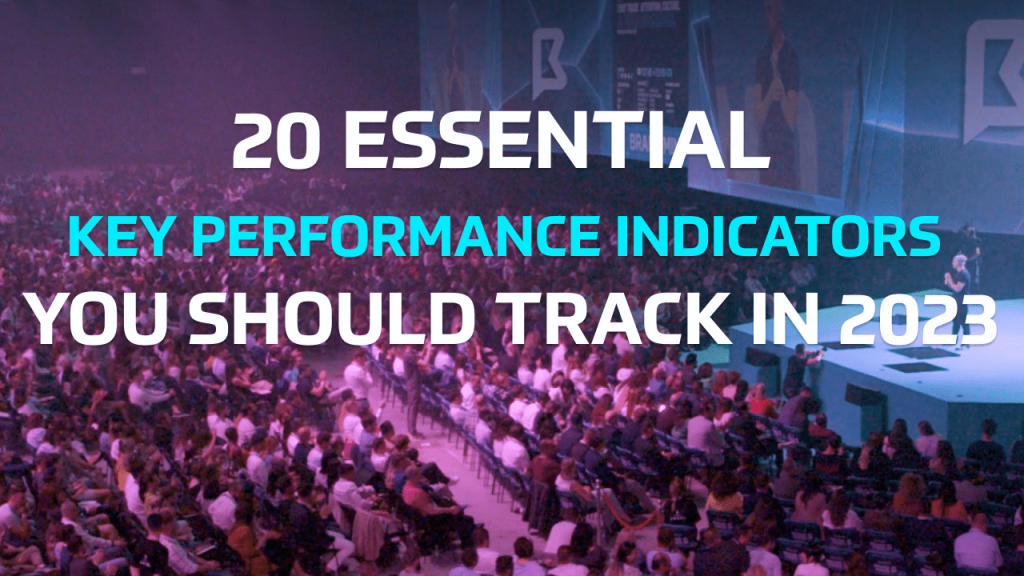20 essential KPIs you should be tracking to improve your marketing
Looking to learn about KPIs and how you can use them to improve your marketing? Then this article is for you!
Table of Contents
What is a KPI in marketing?
KPI stands for key performance indicators.
A KPI in marketing is a measurable value tied to the specific objectives of a marketing campaign.
KPIs help measure marketing effectiveness at the end of a campaign.
KPIs vs marketing metrics
Isn’t KPI the same as marketing metrics?
No, it’s not and you must be able to know the difference between KPIs and marketing metrics.
Marketing metrics are measurable values that include everything from the number of followers of the brand’s page on Facebook, Instagram, YouTube, TikTok to website traffic, email subscribers, MQL (marketing qualified leads) and the list can continue. It’s everything you can measure at any given time.
The KPI belongs to the marketing metrics category, it is indeed a marketing metric itself.
The difference is that the KPIs are tied to a specific goal of a specific marketing campaign whereas marketing metrics are not tied to a specific goal of a specific marketing campaign.
Every marketing campaign has one or several marketing goals. To measure how effective your campaign was to achieve your goals, select the appropriate KPIs.
How are KPIs used to measure performance in marketing?
Before we talk about how to use KPIs to measure and track performance in marketing campaigns, it’s essential to understand the brand’s business goals and objectives.
You cannot measure progress if you don’t know what progress looks like. Or what success means for your business.
So, if you are the leader of your team, share the brand’s business goals for 2021 with your colleagues.
They could focus on revenue (increase sales), suppliers (replace old suppliers with new, more performant ones), employees (reduce employee turnover), profit (increase profit margin) or market (increase market share).
Once everyone in your team is aware of the business goals they need to achieve, you can move on to the next step: establishing marketing goals.
Here are some of the common marketing goals:
- Increase Brand Awareness
- Lead generation
- Promote new products/services
- Target new customers
- Increase website traffic
- Grow your email list
If your business goal is to increase revenue, what marketing campaigns your team needs to create and run in order to achieve it?
You could consider implementing several marketing campaigns. For example, a marketing campaign targeted at new customers or a marketing campaign targeted at your current customers with the goal of upscaling. What would you like them to do: buy more in quantity or buy products that are more expensive?
The KPIs tied to this particular marketing campaign could be 20% new leads generated or 20% customer conversion rate.
Here are 20 essential KPIs that you should track to measure your marketing performance:
- Email open rates
- Email click-through rates
- Email forward rates
- Newsletter signup conversion rate
- Social media engagement rate
- Social media conversions
- New leads generated
- Cost per lead
- Customer lifetime value
- Returning website visitors
- Goal completion rate
- Marketing revenue attribution
- Customer acquisition cost (CAC)
- Landing page conversion rates
- Traffic-to-lead ratio
- Lead-to-customer ratio
- Customer retention
- Content downloads
- Referral traffic
- Net promoter score
1. Email open rates
You worked hard to gain new subscribers to the company’s newsletter, but all is in vain if your emails remain unopened.
Optimize your headlines. Are you sending too many emails per week? If you do, but your subscribers don’t click the unsubscribe button, then they wish to receive your emails but they are too often which leads to email fatigue.
2. Email click-through rates
Your subscribers are opening your emails – that’s great! One of your email campaign goals is to drive website traffic so the email clickthrough rate is an important KPI.
If you note this particular indicator is unsatisfactory (what value did you set for email clickthrough rates?) because the subscribers are not clicking on the links, you should consider the content and the copy. Is the linked content relevant to subscribers?
Re-write the copy: don’t use ‘learn more’ to persuade the subscriber to click the link. Get creative!
3. Email forward rates
The email forward rate is one of the most important KPIs if you are looking to grow a community for the brand.
Opening the email and clicking on the content links inside is one thing, but making your message so relevant to your subscribers that they forward it to someone else is a great achievement.
4. Newsletter signup conversion rate
How many people did your email subscribing campaign convert?
This KPI shows how well you were able to find a match between the brand’s offering and their interests, to speak to their values and show them your solution to their pain points.
5. Social media engagement rate
They say liking a post is the easiest engagement action that your followers can take whereas commenting is the hardest.
Having followers that take the time to express their opinion in a comment to your post is more valuable than receiving likes. It also tells the algorithm that this piece of content is sparking conversations which prompts it to show your post to more people.
6. Social media conversions
It’s nice to have a big number of followers on social media accounts, preferably in the millions. It is an indicator that the brand is popular and a lot of people want to stay connected with the brand.
After having said that, let’s also not forget that the algorithm shows your content to a small number of people. Some say it’s under 1%. So this vanity metric is a nice-to-have feature, but it is not essential.
What is instead relevant is how many conversions does your social content drive? How many clicks to the website? How many email subscribers? How many leads does it generate?
7. New leads generated
Generating new leads is paramount for every brand. You need to constantly show your products or services to new leads gently nudging them to the next step in your marketing and sales funnel.
Check this to get your creative juices flowing: 5 fast ways to generate leads on your website
8. Cost per lead
Lead generation is important, but if the cost of acquiring leads is high, you need to take a step back, analyze every stage of the process and see where you can improve it.
The Pirate Funnel may help you pinpoint where your business is losing customers.
9. Customer lifetime value
Customer lifetime value is the total revenue you can expect from a customer during the period that they remain a customer. Or simply put: how much are they worth to your brand? For example, Amazon Prime members are worth twice as much as non-Prime shoppers. Prime shoppers spend $1,340 annually, more than twice as much as non-Prime shoppers, who spend $650 annually.
10. Returning website visitors
Having a good amount of website traffic is necessary if you want to run ads, show up in organic search results and gain email subscribers.
Your website is owned media, it’s where you control the content – your brand is not at the mercy of any social media algorithms. It’s important to measure the number of new visitors your website gets every month. But equally important is to track how many visitors return to your site.
Returning visitors tell you that your website is a relevant and valuable resource for them. It’s how your brand stays top of mind. It’s also easier to convert returning visitors to leads and then customers.
11. Goal completion rate
Marketers set a goal for every marketing campaign they run. The goal completion rate is a KPI that measures the number of people that complete a specific marketing goal.
How many people subscribed to the brand’s newsletter? How many people have signed up for your freemium offer? It is an important indicator of your brand’s ability to influence to get from the awareness stage to the consideration stage in your marketing funnel.
12. Marketing revenue attribution
Every marketer wants to know how much profit their campaigns have generated. The marketing revenue attribution KPI does exactly that: it tracks and credits the company’s marketing efforts with the generated revenue.
If you are running mobile campaigns, marketing revenue attribution can prove to be a challenge. There are platforms to help you out, it’s only a matter of finding the right one for you.
13. Customer acquisition cost (CAC)
Do you know how much it costs your company to acquire a new customer?
As a business person and a leader, it’s one of the most important numbers you should be aware of. This KPI can be calculated by dividing all costs spent on acquiring new customers (advertising spend, the marketing and sales department salary costs) by the number of customers. Now that you know what your company’s CAC is, if it’s too high, you can start looking for ways to lower it.
14. Landing page conversion rates
Your team has designed a beautiful landing page for your company’s latest offering of products or services. And you are running a campaign to send leads to that landing page with the goal of converting them to customers. The landing page conversion rate KPI shows the performance of the landing page.
If the page has a poor conversion rate, analyze it to see if the graphics and the copy can be improved.
15. Traffic-to-lead ratio
This KPI tells you how many of your website visitors convert to leads. First, you need to establish what exactly means a lead for your brand.
What do you want your website visitor to do? Depending on what your company offers through its website, it could be anything from a newsletter subscribing, downloading a PDF paper, answering a survey or registering for a 7-day free product subscription.
If this ratio is unsatisfactory, one of the main questions you should ask yourself is ‘Are you attracting the right people to your website?’
16. Lead-to-customer ratio
Now that you have established the traffic-to-lead ratio, the next step is to establish the lead-to-customer ratio.
From the total number of leads, how many convert into paying customers? How many push the Buy button? What are you doing to convince them to become customers? Are your leads qualified? A qualified lead is someone who could become a potential customer to you, based on criteria and identifying information that they have freely provided.
17. Customer retention rate
The customer retention rate indicates the brand’s ability to serve and satisfy its customers so well over a given period of time that they have become loyal.
It’s every brand’s dream: customers that are happy to continue to do business. If this KPI is high, then you are doing something right. You may also consider designing a brand ambassador program as your next step. We all know that acquiring new customers is more expensive than retaining existing customers.
18. Content downloads rate
Downloadable content is usually hosted on a landing page as a lead magnet. It helps marketers establish if the content is relevant to the page visitors and if the copy is effective. The visitor who downloaded the content is now a lead and the brand can begin a conversation which could eventually result in a sale.
19. Referral traffic
Directing people to your website is hard work and it usually takes 6 to 12 months to see results for some companies or 3 months for other companies depending on the industry.
Referral traffic is one of those results and describes the people who come to your website from other sites, without searching for your brand on Google. It could be a link on your social media post, or in a blog published by one of your clients. If they are linking back to your website it means your content was helpful to them which in turn helps your brand increase awareness and domain authority.
20. Net promoter score
When we are satisfied with a product or service, we recommend it to our friends and family. It’s one of the most powerful ways a brand can attract customers – word-of-mouth marketing.
The Net Promoter Score assesses the customers’ overall satisfaction and calculates the likelihood of recommending a company or its products.
20 essential KPIs you should be tracking to improve your marketing (updated for 2021) Part 1
Looking to learn about KPIs and how you can use them to improve your marketing? Then this article is for you!
- What is a KPI in marketing?
- KPIs vs marketing metrics
- How are KPIs used to measure performance in marketing?
- 20 examples of essential KPIs for marketing
What is a KPI in marketing?
KPI stands for key performance indicator.
A KPI in marketing is a measurable value tied to specific objectives of a marketing campaign.
KPIs help measure marketing effectiveness at the end of a campaign.
KPIs vs marketing metrics
Isn’t KPI the same as marketing metrics?
No, it’s not and you must be able to know the difference between KPIs and marketing metrics.
Marketing metrics are measurable values that include everything from the number of followers of the brand’s page on Facebook, Instagram, YouTube, TikTok to website traffic, email subscribers, MQL (marketing qualified leads) and the list can continue. It’s everything you can measure at any given time.
The KPI belongs to the marketing metrics category, it is indeed a marketing metric itself.
The difference is that the KPIs are tied to a specific goal of a specific marketing campaign whereas marketing metrics are not tied to a specific goal of a specific marketing campaign.
Every marketing campaign has one or several marketing goals. To measure how effective your campaign was to achieve your goals, select the appropriate KPIs.
How are KPIs used to measure performance in marketing?
Before we talk about how to use KPIs to measure and track performance in marketing campaigns, it’s essential to understand the brand’s business goals and objectives.
You cannot measure progress if you don’t know what progress looks like. Or what success means for your business.
So, if you are the leader of your team, share the brand’s business goals for 2021 with your colleagues.
They could focus on revenue (increase sales), suppliers (replace old suppliers with new, more performant ones), employees (reduce employee turnover), profit (increase profit margin) or market (increase market share).
Once everyone in your team is aware of the business goals they need to achieve, you can move on to the next step: establishing marketing goals.
Here are some of the common marketing goals:
- Increase Brand Awareness
- Lead generation
- Promote new products/services
- Target new customers
- Increase website traffic
- Grow your email list
If your business goal is to increase revenue, what marketing campaigns your team needs to create and run in order to achieve it?
You could consider implementing several marketing campaigns. For example, a marketing campaign targeted at new customers or a marketing campaign targeted at your current customers with the goal of upscaling. What would you like them to do: buy more in quantity or buy products that are more expensive?
The KPIs tied to this particular marketing campaign could be 20% new leads generated or 20% customer conversion rate.
20 examples of essential KPIs for marketing
Here are 20 essential KPIs that you should track to measure your marketing performance:
- Email open rates
- Email click-through rates
- Email forward rates
- Newsletter signup conversion rate
- Social media engagement rate
- Social media conversions
- New leads generated
- Cost per lead
- Customer lifetime value
- Returning website visitors
- Goal completion rate
- Marketing revenue attribution
- Customer acquisition cost (CAC)
- Landing page conversion rates
- Traffic-to-lead ratio
- Lead-to-customer ratio
- Customer retention
- Content downloads
- Referral traffic
- Net promoter score
1. Email open rates
You worked hard to gain new subscribers to the company’s newsletter, but all is in vain if your emails remain unopened. Optimize your headlines. Are you sending too many emails per week? If you do, but your subscribers don’t click the unsubscribe button then they wish to receive your emails but they are too often which leads to fatigue.
2. Email click-through rates
Your subscribers are opening your emails – that’s great! One of your email campaign goals is to drive website traffic so the email clickthrough rate is an important KPI. If you note this particular indicator is unsatisfactory (what value did you set for email clickthrough rates?) because the subscribers are not clicking on the links, you should consider the content and the copy. Is the linked content relevant to subscribers? Re-write the copy: don’t use learn more to persuade the subscriber to click the link. Get creative!
3. Email forward rates
The email forward rate is one of the most important KPIs if you are looking to grow a community for the brand. Opening the email and clicking on the content links inside is one thing, but making your message so relevant to your subscribers that they forward it to someone else is a great achievement.
4. Newsletter signup conversion rate
How many people did your email subscribing campaign convert? This KPI shows how well you were able to find a match between the brand’s offering and their interests, to speak to their values and show them your solution to their pain points.
5. Social media engagement rate
They say liking a post is the easiest engagement action that your followers can take whereas commenting is the hardest. Having followers that take the time to express their opinion in a comment to your post is more valuable than receiving likes. It also tells the algorithm that this piece of content is sparking conversations which prompts it to show your post to more people.
6. Social media conversions
It’s nice to have a big number of followers on social media accounts, preferably in the millions. It is an indicator that the brand is popular and a lot of people want to stay connected with the brand. After having said that, let’s also not forget that the algorithm shows your content to a small number of people. Some say it’s 1% or 2%. So this vanity metric is a nice-to-have feature, but it is not essential. What is instead relevant is how many conversions does your social content drive? How many clicks to website? How many email subscribers? How many leads does it generate?
7. New leads generated
Generating new leads is paramount for every brand. You need to constantly show your products or services to new leads gently nudging them to the next step in your marketing and sales funnel.
8. Cost per lead
Lead generation is important, but if the cost of acquiring leads is high, you need to take a step back, analyze every stage of the process and see where you can improve it. The Pirate Funnel may help you pinpoint where your business is losing customers. Check it out!
9. Customer lifetime value
Customer lifetime value is the total revenue you can expect from a customer during the period that they remain a customer. Or simply put: how much are they worth to your brand? For example, Amazon Prime members are worth twice as much as non-Prime shoppers. Prime shoppers spend $1,340 annually, more than twice as much as non-Prime shoppers, who spend $650 annually.
10. Returning website visitors
Having a good amount of website traffic is necessary if you want to run ads, show up in organic search results and gain email subscribers. Your website is owned media, it’s where you control the content – your brand is not at the mercy of any social media algorithms. It’s important to measure the number of new visitors your website gets every month. But equally important is to track how many visitors return to your site. Returning visitors tell you that your website is a relevant and valuable resource for them. It’s how your brand stays top of mind. It’s also easier to convert returning visitors to leads and then customers.
Join the Conversation
We’d love to hear what you have to say.
Get in touch with us on our LinkedIn Page, Facebook Page, Twitter or TikTok.
How To Measure Content Marketing To Reach Your Goals
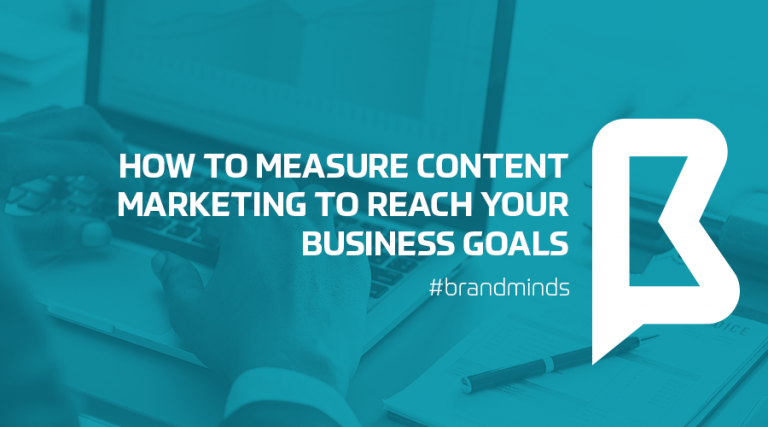
33% of B2B marketers and 41% of B2C marketers cited the inability to measure as a significant challenge. This alarming data comes from a research conducted by the Content Marketing Institute.
To make sure that your content marketing is having the impact that you want it, you must have the right content marketing strategy. Like in anything in marcomm in general, there is no magic formula to identify the key performance indicators (KPI) you need to measure, as content marketing goals are highly individualized. Your marketing priorities are strongly influenced by the size of your business, budget, available resources, previous tests and outcomes, etc. To get the most out of your content marketing strategy, determine your specific goals and tie them to the right KPIs.
First of all you must start by understand the importance of real content and how it has to be true and relevant for your brand. And at the same time what do you want it to solve and achieve. Depending on the goal you are choosing you will need a certain type of content marketing strategy focusing on specific audiences, leveraging different marketing channels, and communicating targeted messages.
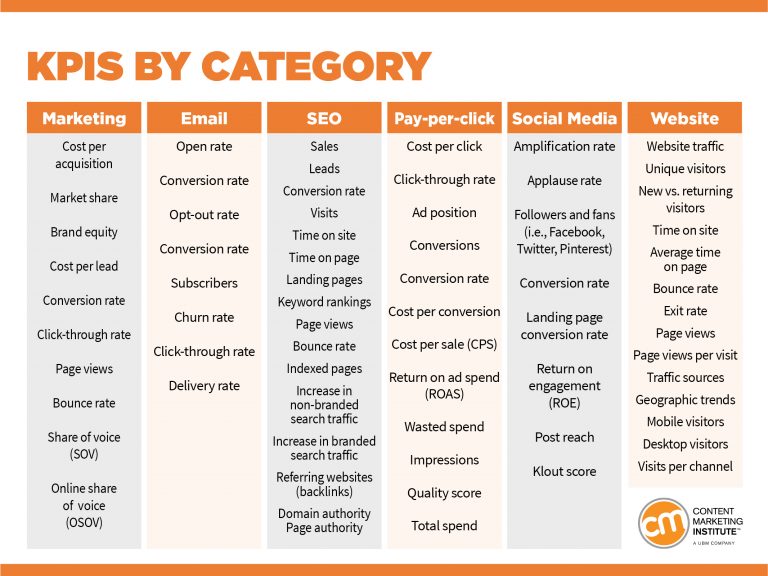
Secondly, you must look for inspiration, find the right themes and start producing the necessary content. From time to time take a better and more insightful look at your data and consumers and see how and if the content you are providing is working or not, as it might need for re-adjusting along the way.
The greatest potential for content marketing success lies in viewing content as a strategic business activity that just happens to be performed by marketers, rather than as a marketing and advertising tactic that gets applied for the express purpose of reproducing incremental wins or amplifying upper-funnel marketing results. Content marketing isn’t a replacement for other forms of marketing – it just makes those forms work better. Content marketing adds value to the business by building a critical strategic asset: a subscribed audience.- CMI
In order to reach your goals through content marketing you will need to cover five core elements: purpose and goals; audience; story; process and measurement.
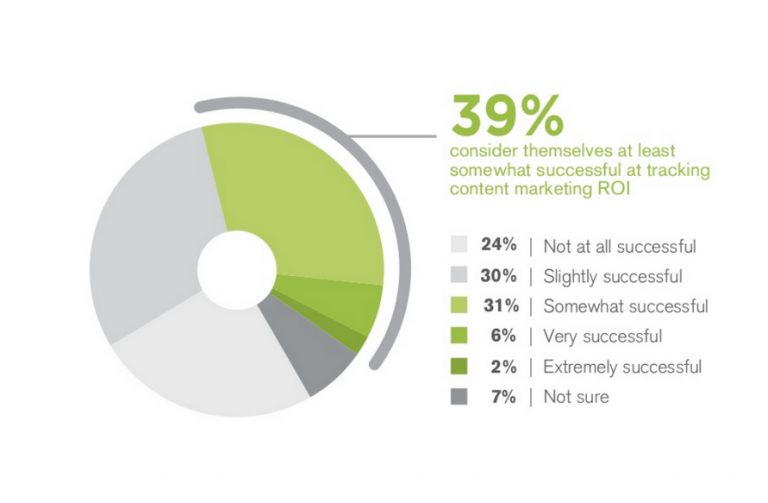
source: Marketing Insider Group
As most content marketers aren’t getting their marketing metrics right, despite all the marketing technology available today, these is your chance to stand out. Less than half of B2B marketers – about 46 percent – are satisfied that their marketing metrics are aligned with their content marketing goals. More often than not, marketers are simply not tracking the right metrics.
With a clear idea of your current content marketing goals, you’ll know which metrics matter the most right now. For example, consumption and lead metrics will take a front row seat on your analytics platforms when your primary goal is to attract new customers. You’ll still use KPIs from different categories as you’ll need to understand how effective your content is at each stage of the buyer journey, but it is the priority metrics that show you if you are reaching your main goals.
Consumption metrics have to do with the number of people consuming your content, as well as the frequency and depth of their consumption and what channels they are using to reach your content. These metrics are going to take a front row seat in your content marketing reporting if your priority goals are building brand awareness, lead generation and lead nurturing.
Sharing and engagement metrics are essential to fostering a relationship with and sense of loyalty from your audience; according to Chartbeat, “visitors who read an article for 3 minutes return twice as often as those who read for one minute”. This is the place where you will see if the audience is into your content and if they find it interesting enough to want to share it with their friends. It’s the right time also to check your brand’s likability,by asking the audience to answer some questions.
Retention marketing metrics
“As the cost of acquiring a new customer is seven times that of retaining an old one, and your current customers will spend 31 percent more on average than new ones, this is one area of content marketing analytics you don’t want to overlook. Even when you’re goal-focused on lead generation, sales or other common priorities, don’t take your eye off of your current customers or you could be losing ground where it matters most, even when you are generating a lot of interest and action from new prospects,” wrote Marketing Insider Group.
The conversion rate is the measure of whether people take the action you want them to take with your content – it could be a simple share on a social media platform or a form submission to download an ebook. It is good to keep a track of the conversion rate to know whether or not your content is converting into valuable information that you can use (email address, sales lead etc.) A good conversion rate varies depending on the industry you are in and the channels you are targeting. According to Teknicks, for inbound marketing campaigns, 1-3% is a good average.
Lead marketing metrics
According to the Content Marketing Institute, sales, lead generation and lead nurturing are among the top organisational goals for content marketers. To effectively track this metric, you need to look at the number of leads generated from form submissions, trial signups, offer opt-ins, and email subscriptions. However, to get the real business picture, you should focus on the number of qualified leads generated by a piece of content.
A CRM can easily help you track and attribute leads to your content marketing campaigns. You can also track the source of leads right from the moment the enter the sales funnel till the point they become a customer. This will help you monitor the content they consume on the way and the content that converts the most. Some popular CRMs you can use are – Hubspot, Zoho, and Capterra. – ducttapemarketing.com
These metrics look at how content impacts the bottom of your sales funnel. When your number one content marketing goal is to drive sales, these are the numbers that will be the most important.
- Total dollar amount of pipeline opportunities and the amount of revenue influenced by one or more pieces of content
- Using a first-touch attribution model, you can aggregate the total dollar amount of sales generated through a piece of content
- Revenue generated
More details about this long and complicated process you can also find here and here.
And if you like our articles,don’t be shy and comment below and share them.
5 pieces of advice for entrepreneurs in 2018, the local PR agency point of view
We recognize the importance of PR in your business and we believe you should as well. Therefore, after last week‘s pieces of advice received from Chapter 4 Romania, we now offer you the perspective of a local, driven and creative PR agency – Galeriu & Partners PR. A point of view wrote by Alina Galeriu, Managing Partner.

It’s a special mindset the one of an entrepreneur. It’s a mindset of a dreamer and in the same time a mindset of a doer. It’s the mindset of an overachiever.
There is no uncomplicated way when you start your own path and take full responsibility for your future and the future of your employees. There is no free time left, because your job becomes your life. Your thoughts will always revolve around your job and the worries will endlessly hunt you. There is no entrepreneur not facing these challenges daily.
I know this first hand, since I am myself an entrepreneur struggling with all these demons, doubts and setbacks. However, I also know how thrilling it is to win a new client, to receive a thank you email for a job well done or to simply see things happening the way you imagined them and even better. It’s like you have a magical wand that makes dreams come true. There are days when such emotions flood me and make every struggle worth it. There are days like these when mountains seem to be easy to move and the sky seems reachable.
So, I understand the way an entrepreneur thinks from an insider point of view. Also, as a communication consultant I come across various entrepreneurial businesses which I can see as an outsider, trying to grasp with an objective eye what needs to be done to improve their performance and help them gain more clients, which is ultimately their goal.
Fine tuning – the art of finding balance between idealism and realism
Talking about goals, the first advice I would give to an entrepreneur is about finding clarity in setting goals. From my experience with dealing with small business owners, the short-term objectives tend to win over the ones focused on long-term. Thus, they seem to be forgetting the bigger picture. Which is very dangerous on the long run for their business. When you think small, you act small.
Of course, there is also the equally dangerous approach of taking risks for the sake of saying “I believe I can, so I will”. Positive thinking can help one boost their morale, but there should be some extent towards which one can keep on dreaming without a reality check.
Either of these approaches would turn out to be inefficient, so my advice would be: start taking calculated risks. Of course, if you simply take small steps, the return will be also small and almost insignificant, so you can soon start feeling demotivated. Risk taking is something you should be considering as an entrepreneur. But, again: take the risk without losing your head! First years after launching a business translate into investing and getting little in return. But if you make the right investments (and by investing, I mean time, energy, money altogether) and have a helicopter view upon the market, the consumer and your product’s place among these exterior factors, you will win in time.
There is a thin line between being either too shy in taking risks or being reckless about it. This fine adjustment in finding the balance between the two is the art of keeping you head clear, focused on the future, yet having your feet on the ground.
How can this be translated into actual PR tactics?
Time to give some real examples, PR related. But not before debunking one more myth: PR is not free. Yes, it means investing far less money than you would have to invest if turning to advertising, but it still is a promoting technique which means investing some money to get results.
For example, you cannot expect to generate free media coverage endlessly without offering product samples to be tested by journalists and online influencers (bloggers, vloggers) or inviting them to test your facility if you are operating in a hospitality industry for example (a restaurant, a hotel, an entertainment facility). This, of course, translates into costs for your small business. But there is no better way to prove the effectiveness of your products or services than inviting key opinion leaders to test and convince themselves that you deserve to be praised. And there are several PR tactics.
Also, you cannot expect that your priorities would be embraced by everyone around you. Of course, your product’s benefits seem the most vital discovery in the world in your view, yet journalists are facing so many similar remarkable / never seen before / innovative product news which they need to browse through… So, it is only natural that sometimes they miss out on some of the details. Or sometimes they genuinely think some other product is more important or relevant for their readers or for the focus and style of the publication they are working for. This should not be a reason to hold a grudge. It is what it is. Learn the lesson and move on. Being too pushy regarding a certain topic will only make journalists feel cornered and uncomfortable. So better than to push someone on the verge of becoming resentful.
And finally, you should take into consideration giving back to others from time to time, through a small CSR campaign, or at least a donation for the less fortunate. Sometimes simply a know-how sharing effort can mean a lot for those in need, while for you would only mean sparing a few hours for visiting students at a university class or hosting internships for them in your company and guiding their firsts steps in the field you activate in.
In many ways PR is simply a set of common sense rules. It’s about empathy, about balance and about being reasonable. As simple as that.
Best Pieces of Advice For Women Entrepreneurs in 2017
According to fastcompany.com, women entrepreneurs are the fastest-growing segment of business owners in the U.S. But, compared to male-owned businesses, women-owned businesses generally fail at a higher rate, employ fewer people and generate less revenue. The reasons for the disparity are complicated and varied: difficulty in accessing capital, entrenched social norms, and differences in the industries male- and female-owned businesses tend to cluster are a few of the reasons behind the imbalance.
We are focusing on the positive and are determined to offer you some pieces of advice that we are sure will help you along the way.
Be bold. Be elegant.
One of the many advantages that women have other men in business is their ability to be bold and elegant, at the same time. Of having the courage to say what they think, openly, but beautifully. Their strengths, presented in a very elegant manner, makes them special and powerful. Likewise, loved by their employees.
Build for the high-expectation customer.
Here’s a common trap founders fall into: gain users at any cost. Often, they chase after daily active users, monthly active users and retention numbers. “They believe that appealing to every customer is one way of solving these problems,” says Julie Supan, who has counseled Airbnb, Dropbox and Thumbtack on branding. That’s the wrong approach, Supan cautions. Instead, focus on the high-expectation customer (HXC). She’s your ideal user, “the most discerning person within your target demographic. It’s someone who will acknowledge — and enjoy — your product or service for its greatest benefit,” Supan says. “If your product exceeds her expectations, it can meet everyone else’s.” The HXC serves as a valuable touchstone to ensure that you’re growing in the right direction and to validate — or invalidate — your action plan.
The deeper the context, the better the advice
Advice givers should always reframe questions to orient around the advice seeker, not their own expertise. And, after offering a spread of data points as context, advice seekers should always ask what they should do next.
Invest in people
Your employees are the best power you have after your own and the gem of your business. They will be the ones helping you achieve the success.

There is benefit to failure
Barbara Corcoran, the famous investor from the hit show Shark Tank once said “My best successes came on the heels of failures.” This is a powerful lesson for any aspiring business owner, as most of today’s most established entrepreneurs have been faced with countless failures. The importance of dealing with failure is that you need to be able to learn from the failure, dust yourself off and move on, even if you deal with consistent failure.
Never be afraid to follow your passion
Debbie Fields, the creator of Mrs. Fields, said “what I wanted was to be allowed to do the thing in the world I did best.” This motivated the entrepreneur to follow her passion for cooking, even when others didn’t believe it could turn into the success it is today.
You have to believe in what you are doing
Estee Lauder, founder of the famed makeup brand said “I have never worked a day in my life without selling. If I believe in something, I sell it, and I sell it hard.” Believing in the product and service that you are selling is the first and most important component of being a successful entrepreneur. Without a firm belief in what you are doing, you will never be able to find the success that you deserve, no matter how hard you work. You must believe in the company you have and work relentlessly to sell that idea to the world, making them believe in it as much as you do.
Big achievements are possible
Entrepreneur and iconic mogul Martha Stewart claimed that “it is within everyone’s grasp to be a CEO.” Years of gender bias have left some women not dreaming big enough with their professional aspirations. Stewart’s quote drives the point home in saying that everyone has the ability to earn this type of title, if they are willing to do the work. Dreaming big and visualizing yourself in a big role is one of the best ways to get started on a journey towards being a successful entrepreneur.
Taking risks is important
Lillian Vernon, founder of Lillian Vernon Corporation, once said: “I don’t look at risk the way other people do. When you’re an entrepreneur, you have to go in feeling like you’re going to be successful.” When Vernon started her company she was married and pregnant, and heard from so many people that starting her corporation was a risk, but it was one she was willing to take. Sometimes, a little risk has to be involved if you want to see the big payoff in the end.

Tell a visual story
Melanie Abrantes, designer, believes that the most important thing about selling your product online is to make sure that the images of your product are able to tell the full story. “Since people won’t be able to see it in person, they have to imagine what the product is going to look like in that setting. When you have professional photography involved, you are able to create a life for that product.”
The means don’t justify the end
The author and icon Gloria Steinem considers that the ends do not always justify the means, in business or in life. “In the end, the who you are is much more important than the what you are. And as beings who need social interaction to survive, the value in who you are while getting to where you’re going is everything. The means will always become the ends,” said Steinem, quoted by billboard.com.
Doubt is your biggest enemy
Trust in yourself and you will do just great. Don’t let anyone plant you doubts when your gusts it’s telling you something. Keep positive people around you that will influence you in a great way.
Celebrate every important step and victory
Make sure you embrace everything good that happens in your business. Don’t sell short your victories and try and enjoy each one of them. Success is not easy to come by and all your efforts and dedication deserve the party.
Keep in mind the big picture
Don’t get frustrated easily or become unhappy just because of some small step backs. Remember the big picture, what you want to accomplish, your main goals. They are the real deal.
More pieces of advice you may find here and here.
How To Avoid The Professional Burnout
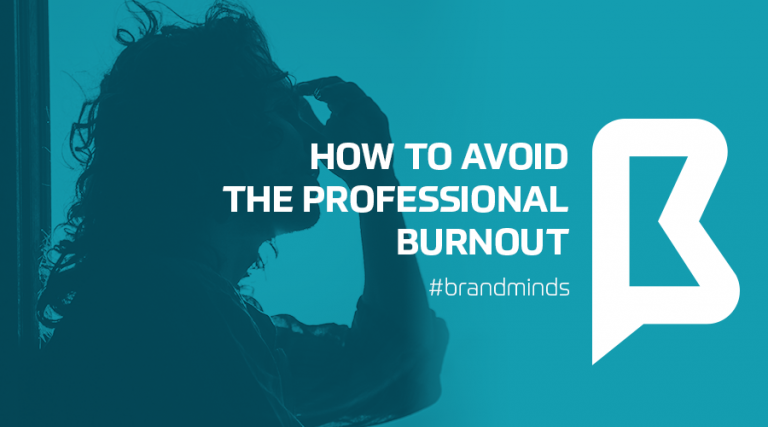
When one is passionate about their job, when one is a high-achiever, one tends to ignore the fact that they’re working exceptionally long hours, taking on exceedingly heavy workloads and putting enormous pressure on themselves to excel—all of which make them ripe for burnout.
According to psychologytoday.com, burnout is a state of chronic stress that leads to: physical and emotional exhaustion, cynicism and detachment, feelings of ineffectiveness and lack of accomplishment. In the state of full-fledged burnout, one is no longer able to function effectively on a personal or professional level. However, burnout doesn’t happen overnight, our bodies and minds do give us warnings, and if you know what to look for, you can recognize it before it’s too late. More about the stages of a burnout and its signs one can read here.

But what can we do to avoid reaching this state? According to Christina Maslach and Michael P. Leiter in their book “The Truth About Burnout: How Organizations Cause Personal Stress and What to Do About It”, when burnout occurs, three things happen: you become chronically exhausted, cynical and detached from your work and you feel increasingly ineffective on the job.
An idea would be to try and be more optimistic and make sure you don’t fall on a pessimistic slide, or, if you have the necessary means, just try a vacation. Realistically speaking though, things are not as easy as they seem, hence the problem creeping out on you and making it quite a big issue.
Pay attention to the voice in your head. When it starts describing negative events as permanent, pervasive or personal, correct yourself. By remembering the 3 P’s (permanence, pervasiveness and personal) and flipping the script, Martin Seligman, author of “Learned Optimism: How to Change Your Mind and Your Life” says you can make yourself more optimistic over time.
Increase your social activity. Spend time with friends, they will bring a balance into your life. As shown by bakadesuyo.com, when the American Medical Association surveyed top doctors to find out how they avoided burnout, one of the key things mentioned was “sharing issues with family and friends.”
Increase your self-efficiency. Paula Davis-Laack, JD, MAPP, an internationally-published writer who travels the globe as a stress and resilience expert, wrote for Psychology Today that self-efficacy is having the belief in your own ability to accomplish (and exercise control over) personally meaningful goals and tasks. People who have a stronger level of perceived self-efficacy experience less stress in challenging situations, and situations in turn become less stressful when people believe they can cope (Albert Bandura, 1989).
Have creative outlets. Burnout interferes with your ability to perform well, increases rigid thinking, and decreases your ability to think accurately, flexibly, and creatively. Even if you aren’t able to flex your creative muscles at work, having some type of creative outlet will keep you engaged and motivated.
Take care of yourself. Make sure you always put yourself first and don’t forget what is important to you and your life. Moreover, pay attention to your health and the outside-work life. Our bodies aren’t machines and one has to remember that things will still be here to be done after taking a much-needed break.
Start saying “no” from time to time. Don’t be afraid to say no. Every “yes” you say adds another thing on your plate and takes more energy away from you.

Get support where you can find it. The number of people who say they have no one with whom they can discuss important matters has nearly tripled in the past two and a half decades. The more depressed or into-work people get, the more they tend not to speak with other people or spend time with others, considering they are always under-time pressure or with a deadline hanging over their head. It’s a state one must make sure he / she doesn’t get stuck into.
According to http://99u.com, to help relieve pressure, schedule daily blocks of downtime to refuel your brain and well-being. It can be anything from meditation to a nap, a walk, or simply turning off the wifi for a while.
Concentrate on positive emotions. Studies show that increasing your diet of positive emotion builds your resilience, creativity and ability to be solution-focused, things that are in short supply if you feel like you’re burning out. I made it a point to start noticing when people did things well (and told them so), and I tried to stop being so hard on myself. Aim for a ratio of positive emotions to negative emotions of at least 3:1, which is the tipping point to start experiencing increased resilience and happiness (Fredrickson, 2009).
Limit your contact with negative people. Hanging out with negative-minded people who do nothing but complain will only drag down your mood and outlook. If you have to work with a negative person, try to limit the amount of time you have to spend together.
Make friends at work. Having strong ties in the workplace can help reduce monotony and counter the effects of burnout. Having friends to chat and joke with during the day can help relieve stress from an unfulfilling or demanding job, improve your job performance, or simply get you through a rough day.
Take time off. If burnout seems inevitable, try to take a complete break from work. Go on vacation, use up your sick days, ask for a temporary leave-of-absence—anything to remove yourself from the situation. Use the time away to recharge your batteries and pursue other burnout recovery steps. Entrepreneurs or freelancers can be especially prone to burnout. Joel Runyon plays “workstation popcorn,” in which he groups tasks by location and then switches, in order to keep work manageable, provide himself frequent breaks, and spend his time efficiently.

Set boundaries. Don’t overextend yourself. Learn how to say “no” to requests on your time. If you find this difficult, remind yourself that saying “no” allows you to say “yes” to the things that you truly want to do.
Nourish your creative side. Creativity is a powerful antidote to burnout. Try something new, start a fun project, or resume a favorite hobby. Choose activities that have nothing to do with work.
Set aside relaxation time. Relaxation techniques such as yoga, meditation, and deep breathing activate the body’s relaxation response, a state of restfulness that is the opposite of the stress response.
Get plenty of sleep. Feeling tired can exacerbate burnout by causing you to think irrationally.
Avoid nicotine. Smoking when you’re feeling stressed may seem calming, but nicotine is a powerful stimulant, leading to higher, not lower, levels of anxiety.
Top traits that make a female a successful entrepreneur
Even in minority when it comes to their numbers, compared to the men who run their own businesses or are top managers, the women possess a series of qualities that make them very suited for the position and, sometimes, even better, than the men, in some fields of activity.
According to a KPMG study, 83 percent of the female entrepreneurs and business owners surveyed think leadership is the most critical trait for a business founder or CEO to possess, while 82 percent think it’s confidence.
“Building a company – and maintaining its success – takes confidence, determination and the ability to take risks. Women entrepreneurs who are able to take these traits and combine them with a strategic vision for their business will not only capitalize on today’s climate of disruption, but they will be the disruptors themselves,” Lee Anne Sciambra, managing partner of KPMG LLP’s New Orleans office and leader of the Houston Business Unit Private Markets Group, said in a statement, quoted by businessnewsdaily.com.
Other qualities that we believe are important are:
Integrity. One doesn’t need to leave victims in her path to be victorious. You don’t need to step on others to step to the next level. Integrity must be the very core of your character. Always put honor first and live by your convictions. As you gain respect and trust, your company will grow. People seek to do business with those they trust.
Perseverance & persistence. They work hand and hand with the power never to give up, no matter how big are the challenges you are confronted with. Women are used to overcoming obstacles everyday, from mentality to perception ones, and tend in general to have a big inner strength. They know how to use the adversity to their advantage.
Being strong–minded & confident in her power. Strong minded doesn’t mean imply being rude, conceited or destructive. On the contrary, a strong-minded woman displays confidence. According to entrepreneur.com, “when you’re strong minded, you’re empowered, possess a healthy self image and take responsibility for your life. The entrepreneurial spirit, by its very nature, requires us to consider possibilities that most aren’t brave enough to”.
Confidence is essential in winning clients and building a profitable business. A person that shows confidence in herself is reliable and wins people’s respect, earns their trust and gains a solid reputation. As first impressions are always really important is essential to show you possess that skill, especially in new business meetings.
Ambition. This is one skill that no person can deny it’s usually equal to “girl power”. Every good leader is known for being really passionate and ambitious about what he / she is doing and showing day feature each time. As Katy Cowan was writing for theguardian,com,“you have to really want something if you’re going to succeed. And you should never settle for second best. Always strive to push forward. Always aim for the top”.
Courage. One cannot start the path of the entrepreneurial road without having at least a portion of courage on the back. Diving into the unknown, facing all the possible problems and difficulties takes a lot of force of character and power. Not everybody can be an entrepreneur, let alone a successful one.
Being determined and focused. Never lose the sight of your business goal. They should be committed your short- and long-term goals to writing, recording how and when you’ll achieve them. Post your goals in plain sight and review them often. Record the reward when the goal is attained. Remember that you can’t hit a mark you can’t see, and continual success demands a plan.
Hard work. Women are famous for putting a lot of work in everything they do, for being perfectionist, both in the professional and personal life. Success cannot be achieved without sacrifices and a lot of time and energy invested. They know it and are not afraid to show it.
Showing compassion. We are not Robots and thank God for that. Emotions make us who we really are and showing your human side is essential if you aspire to being a leader. Moreover, charity and compassion allow you to make a difference in the lives of others, a quality that is more and more searched for today. A woman with a compassionate heart can achieve a great deal of influence and positive image that will help her business thrive.
Failure is not the end
We are not used to talk about it, to consider it part of the process, to give it its big importance, to learn from it and understand that it might, or might not, take us to the success. What is sure ids that we mustn’t be afraid of it, try to hide it underneath the carpet and pretend like it never happened. The most successful people in the world lived through it, surpassed it and pushed through. Many entrepreneurs that we know and appreciate nowadays have failed with other previous business or fail daily in more or less important parts of their jobs or activities. Failure makes them stronger, teaches them the values and the importance of appreciating every step of the business track and, more than anything, the success, when and if it comes.
“We all have different definitions of failure, simply because we all have different benchmarks, values, and belief systems. A failure to one person might simply be a great learning experience for someone else. Many of us are afraid of failing, at least some of the time. But fear of failure (also called “atychiphobia”) is when we allow that fear to stop us doing the things that can move us forward to achieve our goals,” believes the team of www.mindtools.com.
The fear of failure may have various causes and goes back, most of the times, in our childhood, just like it happens with most of the things that define our lives and whom we are meant to be. Not having the right support, being undermined or humiliated in childhood, those are some causes that will most definitely carry negative feelings into adulthood.
As the editors of edutopia say, failure is an inevitable part of life, but it’s often accompanied by shame — most people do everything in their power to avoid it. As educational philosopher John Dewey said, a true thinker learns as much from failures as from successes. What if educators worked to take some of the sting (and the stigma) out of failing, and encouraged reflection and revision to build upon the lessons learned? “Perhaps there’s a goldmine of opportunities if we can re-frame failure as a valuable learning experience, an essential step along the path to discovery and innovation,” they added.
“Not talking about it is the worst thing you can do, as it means you’re not helping the rest of the organization learn from it,” said Jill Vialet, who runs the nonprofit Playworks. “It gives [the failure] a power and a weight that’s not only unnecessary, but damaging.” Vialet added, referring to the fact that the people involved in the failure should speak about it openly and work to prevent history from repeating itself.
This idea is already ingrained in the cultures of some for-profit industries. For example, in Silicon Valley, failure is a rite of passage. “If you’re not failing, you’re not considered to be innovating enough. Silicon Valley investors, in turn, regularly reward entrepreneurs’ risk-taking behavior, though they know the venture may fail and they will lose their capital,” it’s shown in an article on opinionator.com. In addition, Jill Vialet of Playworks emphasizes the importance of “failing fast and cheap” (as opposed to slow and expensive). She sets aside a budget for new programs that intentionally have unpredictable outcomes. They limit the scope of these programs, clearly define failure and success at the outset, and decide when to measure the new program’s merits. “It’s about being disciplined and rigorous,” said Vialet, since human nature normally prevents us from recognizing our mistakes while they are occurring, quoted by opinionator.com. A great article on the subject one also can find on guardian.com.
![]()
It all depends on how the organization and the people that run it see failure and its importance in business. Just as some organizations encourage employees to talk about failure in office events that are closed to the public, others publish their failures for the world to see. Engineers Without Borders Canada, which creates engineering solutions to international development problems, publishes a “ failure report” every year alongside its annual report. “I only let the best failures into the report,” said Ashley Good, its editor. The examples that are published, she said, show people who are “taking risks to be innovative.”
Moreover, Good also started a Web site, Admitting Failure, to encourage people working in international development to share their stories of failure. The site includes stories about arriving unprepared to an emergency medical situation in the Middle East, the theft of an expensive and underused water filter, and more.
In addition to nurturing a culture of innovation and reflection, talking about failure helps build a canon of knowledge of what not to do in the future.
Still, change doesn’t come over night and building a culture of openness to failure takes time and consistent effort. In the majority of cases, however, failure in the social change world does not involve as many dollars or stakeholders, and admitting it can have a net positive impact on an organization. Doing so can build institutional knowledge and create a culture where people are more open to taking risks.
Often, valuable insights come only after a failure. Accepting and learning from those insights is key to succeeding in life.
“The ability to grow and keep trying when you don’t succeed — resilience and grit — are key to cultivating a growth mindset, in academics and in life. I like how the business world has coined the term “failing forward” to mean using mistakes as stepping stones along the road towards achieving your goals”, says edutopia.org.
We can choose to see failure as “the end of the world,” or as proof of just how inadequate we are. Or, we can look at failure as the incredible learning experience that it often is. Every time we fail at something, we can choose to look for the lesson we’re meant to learn. These lessons are very important, they’re how we grow, and how we keep from making that same mistake again. Failures stop us only if we let them.
“Maybe failure doesn’t always lead to success but is simply the price of doing the right thing. Or sometimes tragedy strikes for no reason and without any apparent benefit. Maybe success in the broader sense comes in the form of failure itself when success’s definition is no longer limited to our individual lives,” says Anthony Sabarillo for medium.com
Instead of conclusion, we leave you with a very interesting article on lifehack.com, showing you six reasons it’s ok to fail.
Top 10 Tips for Branding Yourself

source: Working Voices
Living in the era of social media power, when the information is the key and in everybody’s reach, finding oneself’s niche and becoming known is getting a more and more difficult task to accomplish. Even at first glance it seems the reality is exactly the opposite, the rapidity in which one can get into the public’s eye, but at the same time fade away, makes it even harder than before to make it last and create a strategic and smart path for one’s good brand positioning.
We’ve prepared some tips that we hope will help you on your road to success:
- Asses the market you are working on
Knowing the past, the competition and the market you are activating on is key in order to create a good positioning for your brand.
- Look deep within yourself and find your best features
According to Robert Half, branding yourself begins with self-reflection. Take stock of your strengths. What are your best attributes? What positive adjectives might a colleague use to describe you? Is there one particular talent or discipline in which you truly shine? What’s your personality? If you’re just beginning your career, choose a discipline or area of focus that truly interests you. Don’t pretend to be something you’re not. Hard-working, focused and reserved people get ahead just as often as social butterflies.
- Work on developing them even more
Go to extra classes / courses, attend workshops and seminars that will help be become even better on your field of expertize and that will enhance your talents. Learning never ends, no matter the time in your career you are at.
- Of all of them find the differentiator, your USP (unique selling point), that makes you unique
The USP is the big idea that brands are always searching for. A USP gives a brand a compelling and unique value proposition with its target audience. “Likewise, you want to represent something special that sets you apart from others and establishes a value equation about your abilities when you are pitching yourself for a job, a promotion or a free-lance assignment,” says Catherine Kaputa in Huffington Post.
- Define your brand and become an expert
Take the time to do some soul searching and determine exactly who you are and what makes up your brand. Whether you’re looking to garner media attention, attract new clients or build your business, you should focus on becoming an expert in your field. Avoid establishing an expertise that’s irrelevant to your mission, goals, and vision. You’ll just be wasting your time.
- Be present in the market and make yourself known
Make sure you are present at the most important events in your industry and start conversations with the right persons, the ones with whom the association with will help your brand and your career. Ask questions, mingle, try and show your expertize as much as you can.
- Generate brand awareness through networking and promotion
You should be connecting with other professionals in the industry by using social networks and commenting on their blogs. Networking is one of the best ways to become known in the industry. By forming relationships with people in your audience, you can grow your business and your brand long-term.
In time, once you have a known and appreciated voice try using the PR tools available to you and get your name out there.
- Be a constant presence on the social media channels that are representative for your work
Depending on the industry you are activating on make sure you know what social media channel suits you the best. Not every industry fits you having a profile on Linkedin and Facebook at the same time, not every industry requires an Instagram or Snapchat account. Also, make sure that the content you are delivering is customized to that specific social media account.
- Always keep on expending your network, strategic partnerships and focus on the game plan
The networks are meant to evolve, not stand by. So is the industry you are activating on. Moreover, you can never know what the future holds. The more people you know, the merrier. The more connected you are, the better. Make sure that at the same time you don’t lose the focus on your “final” game plan.
- Don’t look focus, get rid of your ego and accept criticism
According to the AICPA specialists, the true measure of your brand is the reputation others hold of you in their hearts and minds. Notice how they introduce you to others. Ask them what your top brand attributes and core strengths are. If they can easily tell you, then you’ve succeeded in branding you.
“These days, branding the company you work for isn’t enough. The world wants to hear what you have to say as a professional within a company. The work involved in uncovering your brand may seem daunting, but your efforts can benefit you immeasurably. Your unique brand message differentiates the best you have to offer, gives a good indication of what you’re like to work with, and shows how you make things happen,” says the American Institute of CPAs.
When it comes to being the best the ego shouldn’t be standing in your way. Accept the criticism, as it will only make you better and help you achieve your goals.
